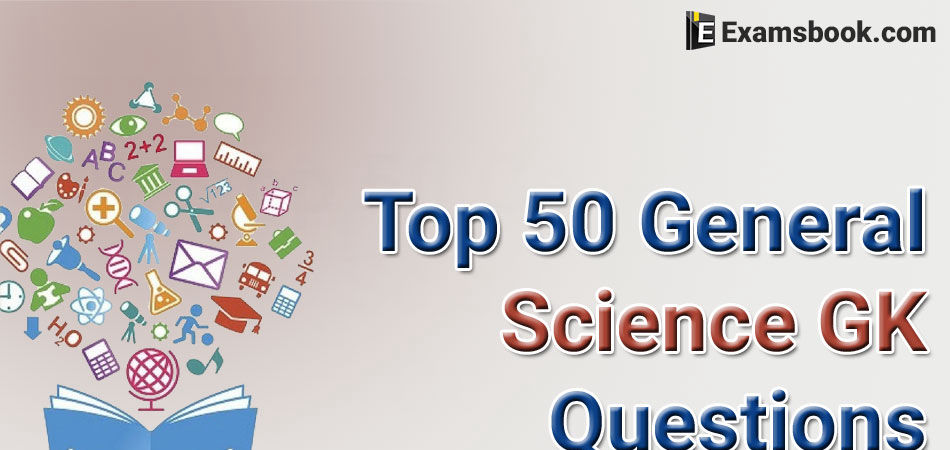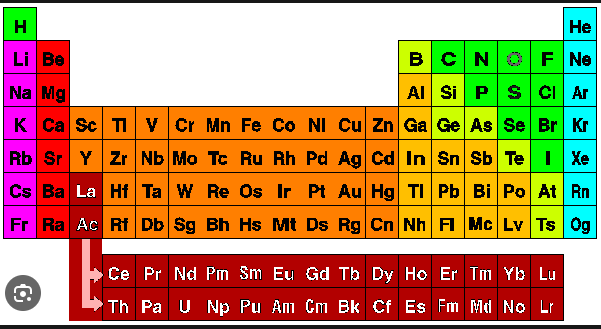Top 50 General Science GK Questions

Here are the Top 50 General Science GK Questions for those learners who are preparing for competitive exams. In this post, I have updated the most important General Science questions and answers around the world with the latest current affairs questions and answers about many Science topics covered.
I have prepared the Top 50 General Science GK Questions blog to increase your Science GK level as well as increase your confidence level for competitive exams.
Students can easily get free General Knowledge Mock Test and Current Affairs Mock Test on this platform for online exam practice to obtain good marks in competitive exams.
Also, Read Latest Current Affairs Questions 2023: Current Affairs Today
"Stay ahead of the competition with our General Knowledge Mock Test and Current Affairs Mock Test!"
Science GK Quiz
Q : What is the anti-particle of electrons?
(A) Positron
(B) Proton
(C) Alpha-Particle
(D) Beta-Patakal
Correct Answer : A
Explanation :
The positron is the antiparticle to the electron. The positron has the same rest mass (m0) as the electron but opposite charge, one positive elementary charge. In condensed matter, each positron annihilates with an electron yielding γ-rays in a very short time (10−10–10−9 s).
Which of the following products are formed during anaerobic respiration in yeast?
(A) Acetic acid + energy
(B) Lactic acid + carbon dioxide + energy
(C) Ethanol + carbon dioxide + energy
(D) Lactic acid + energy
Correct Answer : C
Explanation :
1. Yeast breaks down glucose, producing ethanol and carbon dioxide and energy.
2. Yeast reacts anaerobically.
In the presence of sunlight, plants prepare their food (glucose) with CO2 and water. What is this reaction?
(A) Displacement
(B) Disintegration
(C) Photochemical
(D) precipitation
Correct Answer : C
Explanation :
Photochemical is the process by which plants use sunlight, water, and carbon dioxide to create oxygen and energy in the form of sugar.
Which of the following elements is NOT a component of baking soda?
(A) Hydrogen
(B) Calcium
(C) Sodium
(D) Oxygen
Correct Answer : D
Explanation :
1. Which of the following calcium elements is not a component of baking soda?
2. The chemical formula of baking soda is NaHCO3, which is composed of four elements sodium, hydrogen, carbon and oxygen.
3. Baking soda is an alkaline substance used as a leavening agent in baking.
Which law was studied in the year 1787, in which it was said that the volume of a gas increases with its absolute temperature and if its absolute temperature decreases, then its volume will decrease?
(A) Boyle’s law
(B) Dalton’s law
(C) Avogadro’s law
(D) Charles's law
Correct Answer : D
Explanation :
1. Charles's law (also known as volume law) is an experimental gas law.
2. The volume of a gas increases with its absolute temperature and as its absolute temperature decreases its volume also decreases.
3. Charles's law was studied in the year 1787.
Identify a class of compounds that has a functional group –OH.
(A) Alcohol
(B) Ethane
(C) Ketone
(D) Aldehyde
Correct Answer : A
Explanation :
1. That class of compounds, which contain a functional group –OH, is called alcohol.
2. Alcohols contain a hydrogen atom and a hydroxyl group (-OH) along with a carbon atom.
3. The hydroxyl group is a polar group, which makes the alcohol soluble in water.
Hydrogen resembles the properties of which two groups of the periodic table?
(A) Group 2 and Group 17
(B) Group 1 and Group 3
(C) Group 1 and Group 17
(D) Group 2 and Group 4
Correct Answer : C
Explanation :

2. Following is some additional information about the properties of hydrogen.
- Hydrogen is a highly flammable gas.
-Hydrogen is a major component of water.
- Hydrogen can be used as fuel.
Hydrogen is used in the chemical industry to make many types of products.
The Nobel Prize in Chemistry 1951 was awarded jointly to Edwin Mattison McMillan and ______ for their discoveries in the chemistry of the transuranium elements
(A) Jacob Berzelius
(B) Leon Jouhaux
(C) Glenn T Seaborg
(D) Albert Schweitzer
Correct Answer : C
Explanation :
Edwin Mattison McMillan (September 18, 1907 – September 7, 1991) was an American physicist credited with being the first to produce a transuranium element, neptunium. For this, he shared the 1951 Nobel Prize in Chemistry with Glenn Seaborg.
In 1845, which German chemist published a method for the synthesis of acetic acid, a natural product containing two carbon atoms?
(A) Friedrich Wohler
(B) Marcellin Berthelot
(C) Joseph Gay-Lussac
(D) Hermann Kolbe
Correct Answer : D
Explanation :
1. In 1845, the German chemist who published a method for the synthesis of 'acetic acid', a natural product containing two carbon atoms, was Hermann Kolbe.
2. He created carbon disulfide with chlorine, and the end result was carbon tetrachloride.
The electron configuration of the atom with the atomic number '20' is?
(A) 2, 8, 10
(B) 2, 6, 8, 4
(C) 2, 8, 8, 2
(D) 2, 10, 8
Correct Answer : C
Explanation :
The electronic configuration of the element with atomic number 20 is 2, 8, 8, 2.
The element with an atomic number of 20 is Calcium, Ca.
The electron configuration is found using the Aufbau principle: 1s2, 2s2, 2p6, 3s2, 3p6, 4s2
It belongs to the 2nd group and 4th period.



